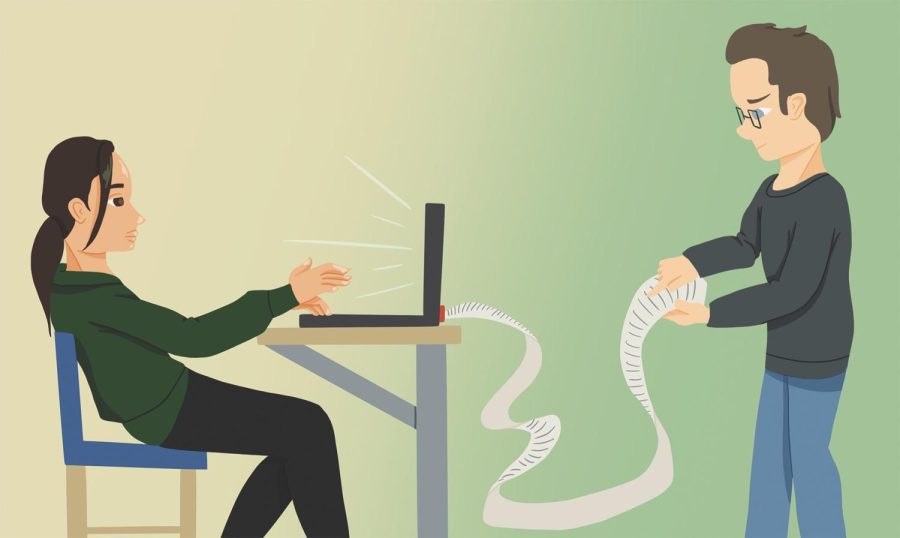Device activity tracked through Wi-Fi
Improper internet activity leads to flagging
As sophomore Alex Matsumoto sat in class, he browsed tabs on his school-issued Chromebook, switching between school assignments and sports videos.
“I sometimes go on YouTube and watch videos or just play [a] simple game using arrow keys,” Matsumoto said.
He also likes to use the Gmail chat function to talk to his friends during class, Matsumoto said.
According to Christopher Doebler, technology operations specialist at Glenbrook North, even though students can access a variety of content on their devices during class, all devices connected to the school Wi-Fi can have their activity tracked.
Tariq Baig, Glenbrook High School District #225’s senior network engineer, said in a phone interview that he is the only person with immediate access to this activity.
According to Doebler, the activity is always being tracked, but activity is only checked when flagged.
Someone may get flagged by going to inappropriate or dangerous websites, or by threatening someone else while on the device, Doebler said.
Students cannot get flagged by their teachers, Doebler said.
A teacher can report alarming device activity to the Deans’ Office, the School Resource Officer or any other administrators, but that report does not necessarily mean an investigation will take place, Doebler said.
If an issue does become apparent with a student, then the Deans’ Office or members of the school administration can request a further investigation which generally begins with Baig, Doebler said.
If a faculty or staff member gets flagged, the district often employs a third-party computer forensics team, Doebler said.
According to Matsumoto, he sometimes browses YouTube while his teacher is speaking, but in general, he has no problem with school staff members having the ability to see what he does on his Chromebook.
According to sophomore Justin Lezak, when he learned about Baig’s access to activity on the school Wi-Fi, he did not think to change the way he uses his computer.
“I don’t really think I’m doing anything bad or against school policy, so it doesn’t really change [my behavior] that much,” Lezak said.
According to Doebler, students do not get flagged often, but when they do, it is generally because they went out of their way to break a rule such as viewing inappropriate content during school.
“We’re not trying to hunt students, we’re trying to protect them,” said Doebler. “If you’re not doing anything wrong, you have no reason to worry.”


